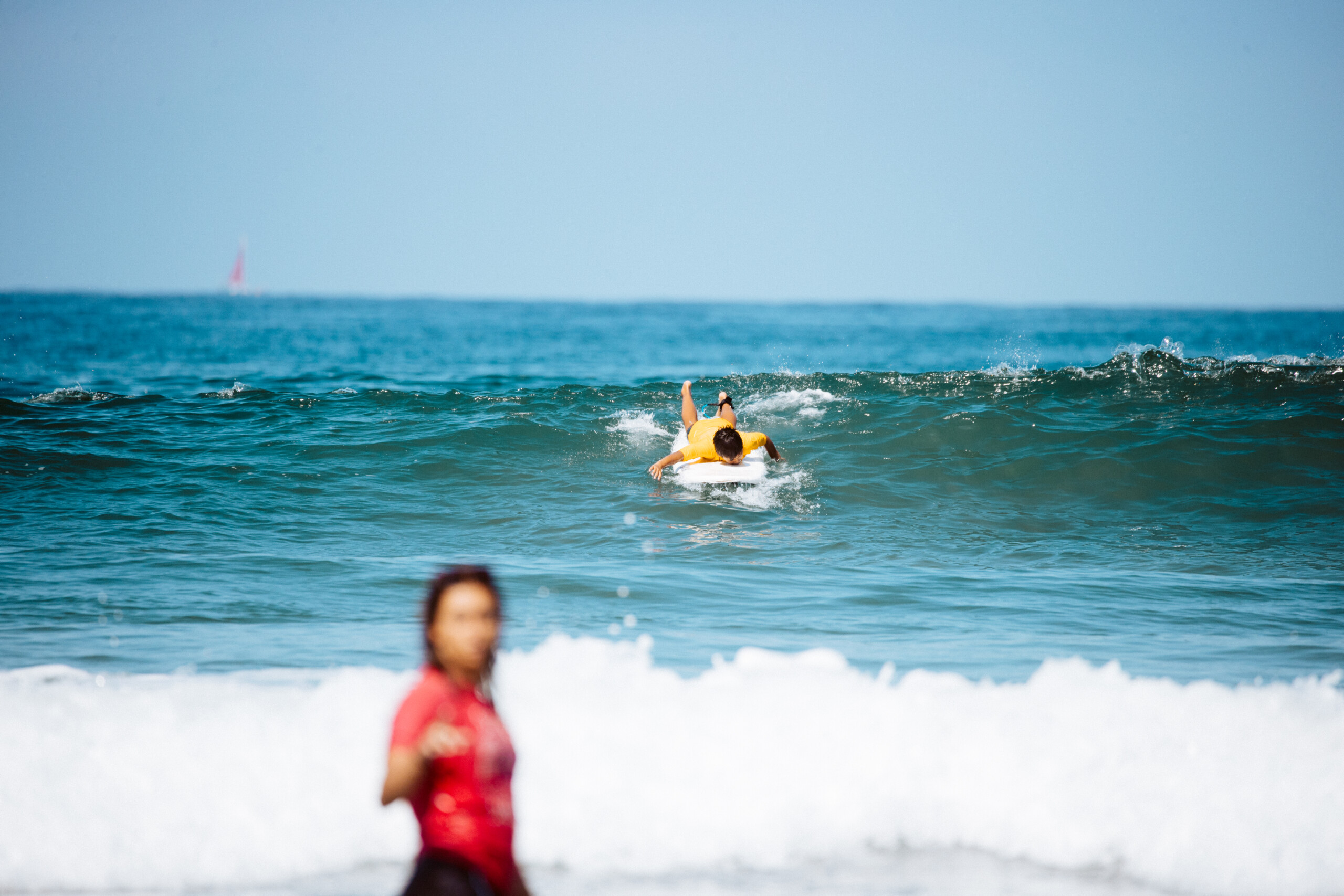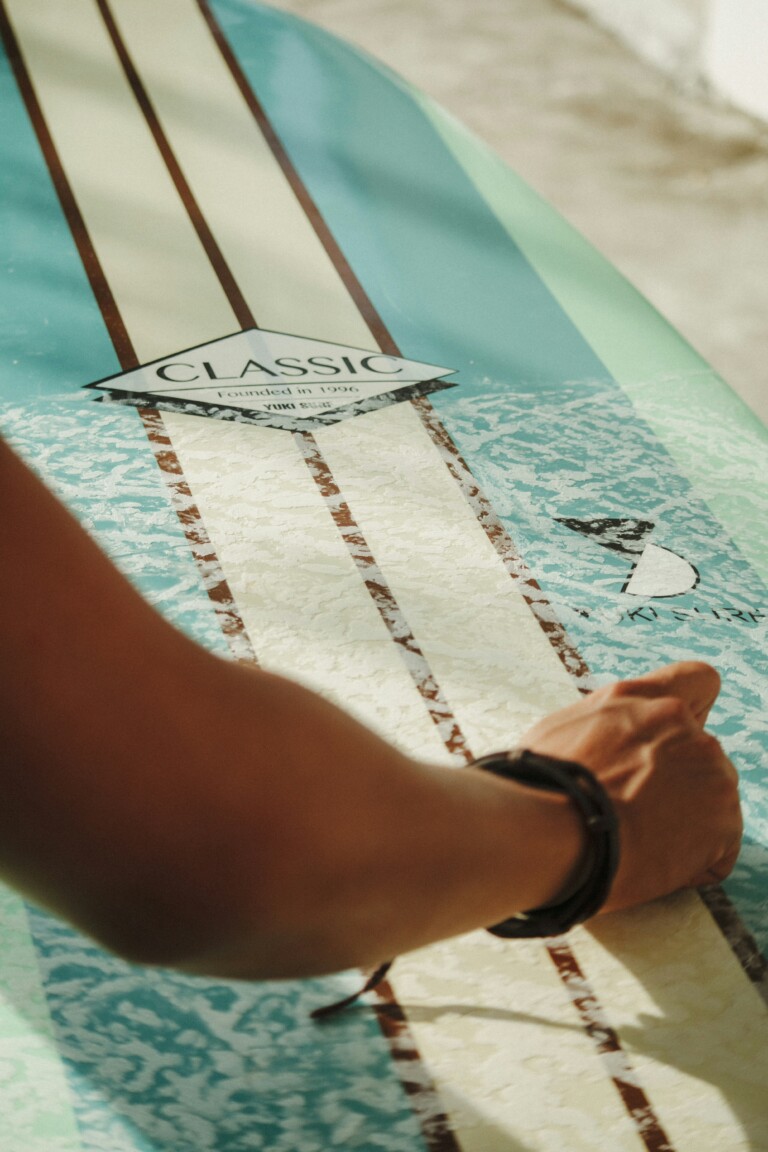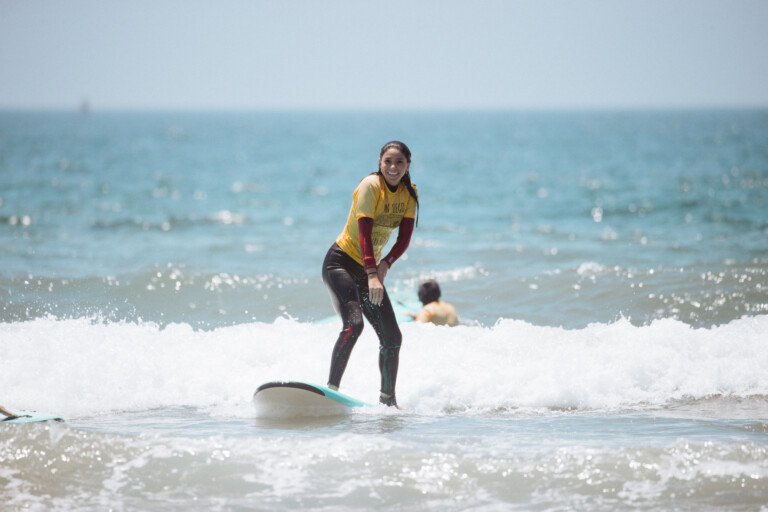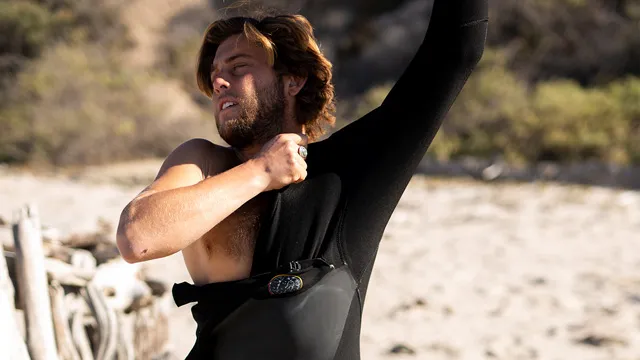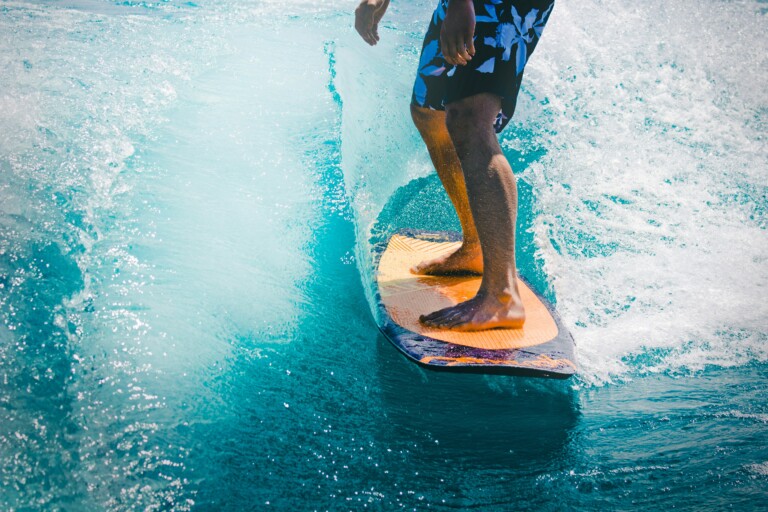Paddling is the backbone of surfing. It’s how you move through the water, position yourself for waves, and ultimately catch them. Without efficient paddling, even the most skilled surfers would struggle to get into the right spot and ride waves effectively. Whether you’re a beginner taking your first surf lesson or an experienced surfer looking to improve, understanding the importance of paddling efficiency and knowing the steps to paddle into a wave can make a significant difference in your surfing experience.
Why Paddling Efficiency Matters
- Conserves Energy: Surfing is a physically demanding sport, and paddling can take up a lot of your energy. Efficient paddling helps conserve your energy, allowing you to stay out in the water longer and catch more waves.
- Increases Speed: The faster and more efficiently you paddle, the quicker you’ll be able to get into the right position to catch a wave. This speed is crucial, especially in crowded lineups where getting into the wave first can make all the difference.
- Improves Wave Count: With better paddling efficiency, you can cover more ground, reach more waves, and ultimately increase the number of waves you catch during a session.
- Enhances Control: Efficient paddling gives you better control over your surfboard, making it easier to navigate through the water, avoid obstacles, and maintain balance.
Steps for Paddling into a Wave
- Position Yourself in the Lineup: Before paddling into a wave, you need to be in the right spot in the lineup. Position yourself just outside the break zone, where waves are starting to form but haven’t fully broken yet. This gives you enough time and space to paddle into the wave as it approaches.
- Spot the Wave: Keep an eye on the horizon and look for incoming sets. When you see a wave approaching, assess its size, shape, and direction. Make sure it’s a wave you want to catch, and adjust your position accordingly.
- Turn and Face the Shore: Once you’ve chosen a wave, turn your board to face the shore. This is the direction you’ll be paddling in to catch the wave. Keep your eyes on the wave and start paddling as soon as it gets closer.
- Start Paddling Early: Begin paddling before the wave reaches you. This helps you gain momentum and match the speed of the wave. Use long, deep strokes, and keep your body low on the board to reduce drag.
- Focus on Timing: Timing is everything when paddling into a wave. You want to start paddling at the right moment—too early, and you’ll miss the wave; too late, and the wave will pass you by. Ideally, you should be paddling at full speed just as the wave starts to lift you.
- Feel the Lift: As the wave begins to lift the tail of your board, you should feel a push forward. This is your cue to paddle even harder. Keep your strokes powerful and consistent, and stay centered on your board.
- Pop-Up: Once you’re in the wave and feel the drop, it’s time to pop up. Push up with your arms, bring your feet underneath you, and stand up on your board. Keep your eyes forward and your weight centered as you ride the wave.
Cues to Look For
- Wave Shape: Look for waves that have a well-defined peak and are beginning to form but haven’t broken yet. A wave with a clean face and a defined peak is easier to catch and ride.
- Speed and Momentum: As you paddle, feel the wave’s energy underneath you. The wave should start pushing you forward, giving you the momentum needed to catch it.
- The Lift: When you feel the wave start to lift the tail of your board, that’s your signal to increase your paddling speed and prepare for the pop-up.
- The Drop: The moment you feel the wave drop away beneath you, it’s time to execute your pop-up. This is when you’re fully committed to the wave, and your timing and balance are crucial.
By mastering paddling efficiency and understanding the steps and cues for paddling into a wave, you’ll improve your surfing performance and enjoy more successful sessions in the water. At San Diego Surf School, we emphasize the importance of these skills in our surf lessons, ensuring that surfers of all levels can confidently navigate the waves and make the most of their time in the ocean.











